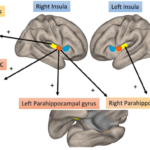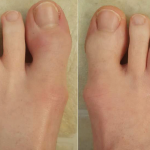The results indicated that the prevalence of inflammatory lesions was generally higher in PsA patients, although the frequency varied by entheseal site. Power Doppler signals were found to be infrequent and also dependent on site. Although other differences between patients and controls were observed for specific lesions assessed, the overall conclusion of the study is that sonographic entheseal abnormalities are not exclusive to PsA. These findings suggest that the US for evaluating entheses may need to take into account both the entheseal site affected as well as the severity of the findings. Future studies will be needed to determine how best to incorporate US in comprehensive evaluation of PsA by imaging.
10. Active Hand Inflammation
Abstract 0227: Ramirez et al.10
In evaluating patients with inflammatory polyarthritis, the distinction between PsA and RA can usually be readily accomplished because of psoriatic skin disease (PsO) for patients with PsA, and anti-citrullinated protein antibodies (ACPAs) for those with RA. Nevertheless, imaging is a valuable tool to understand disease pathogenesis as well as develop information for prediction and treatment response. Ramirez et al. used ultrasound to assess finding of proliferative synovitis (PS) in PsA and RA patients with hand involvement, focusing on synovial hypertrophy (SH) and Power Doppler (PD) in patients with seropositive RA, seronegative RA and PsA.
In this population, approximately one-half of patients met criteria for PS on ultrasound, with the frequency greater in seropositive RA than either seronegative RA or PsA. PS was associated with erosions in these patients. On the other hand, tendon involvement was observed in all groups and interestingly 12% of patients had tendon involvement without joint involvement. Finger ankyloses occurred rarely in this patient cohort and was found only in those with PsA, highlighting another difference between PsA and other forms of inflammatory polyarthritis.
Although this study concerned ultrasound findings, an interesting aspect relates to medication use, with 25% of patients with PsA on glucocorticoids that were associated with erosion; this association may be related to their use in patients with more severe disease. Although therapy with glucocorticoids in RA is well established (although controversial), their effects on disease in PsA merit attention, with imaging providing novel information to determine their impact on joint and tendon involvement in PsA.
 David S. Pisetsky, MD, PhD, is a professor of medicine and immunology at Duke University School of Medicine, Durham, N.C., and a staff rheumatologist at the Durham VA Medical Center. He also served as the first physician editor of The Rheumatologist.
David S. Pisetsky, MD, PhD, is a professor of medicine and immunology at Duke University School of Medicine, Durham, N.C., and a staff rheumatologist at the Durham VA Medical Center. He also served as the first physician editor of The Rheumatologist.


